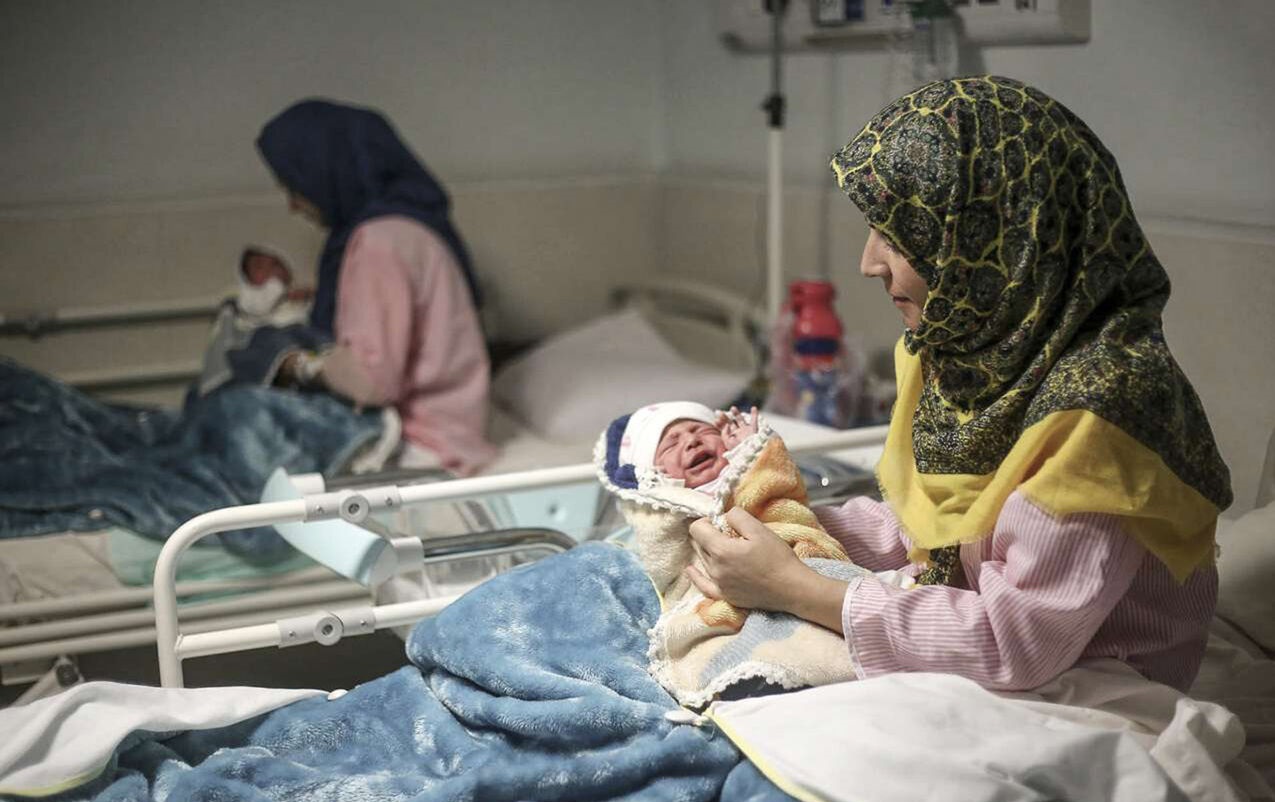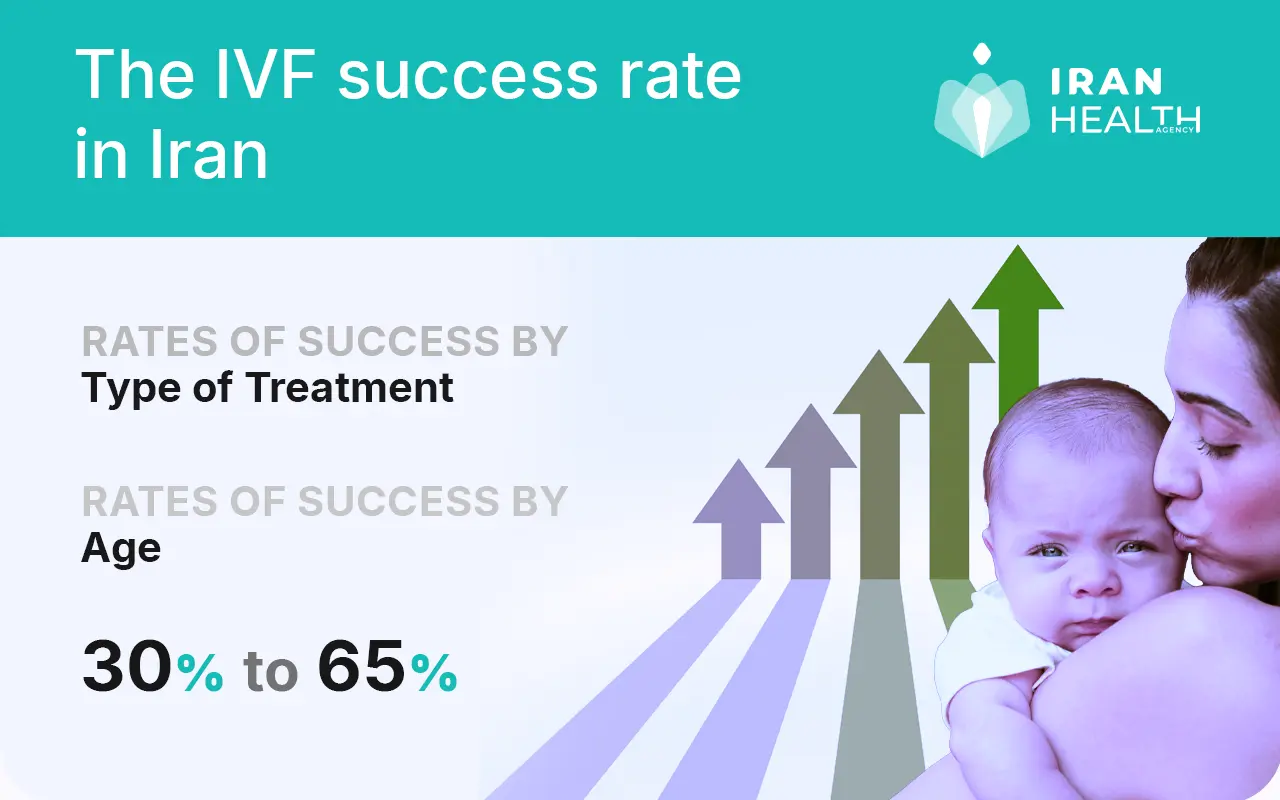Something big is happening with how many babies are being born in Iran, and it's a topic that truly gets people talking. This shift in the country's fertility numbers isn't just a dry statistic; it actually touches on so many aspects of everyday life, from family plans to the very makeup of future generations. We're talking about a significant change that has quite a few people wondering what's behind it all.
For quite some time, Iran has seen a notable drop in its birth rates, a trend that, you know, has caught the eye of researchers and everyday folks alike. This change affects everything from how many young people will be around to support older generations to the kind of support families might need. It's a really big deal for the country's future.
This piece will explore the various things that might be influencing this trend, looking at what people are saying and, in a way, what it means for families and the wider community. We'll also touch on some general points about fertility, drawing a little from what we know about common issues people face when trying to have children, as shared in general health discussions.
Table of Contents:
- What's Going On with Iran's Fertility Rate?
- Why the Change in Iran's Fertility?
- How Do Societal Shifts Affect Iran's Fertility?
- Are Health Factors Playing a Part in Iran's Fertility Numbers?
- The Economic Picture and Iran's Fertility Choices
- Family Planning and Iran's Fertility Outlook
- Understanding Personal Journeys to Parenthood in Iran
- Looking Ahead for Iran's Fertility
What's Going On with Iran's Fertility Rate?
The number of children being born per woman in Iran has seen a pretty significant dip over the past few decades, which is, honestly, a big topic of conversation for many. It's gone from a point where families often had quite a few children to a situation where the average is much lower. This kind of shift is something that catches your attention, especially when you think about what it means for the country's population down the road.
A Look at the Changing Iran Fertility Rate
If you look back, the Iran fertility rate was once quite high, reflecting a time when larger families were the usual way of things. But then, as time went on, things started to change, and the number began to decrease quite steadily. This isn't just a slight wobble; it's a real downward trend that has continued for a good while. People are, you know, trying to figure out all the different reasons why this might be happening, as it's not just one simple cause.
This drop in the average number of births per woman is something that many countries experience as they develop, but the speed of the change in Iran has been particularly noticeable. It's almost as if society decided, in a way, to shift gears very quickly. This change has brought about lots of discussions among people who study population trends and also among everyday families who are thinking about their own futures.
Why the Change in Iran's Fertility?
So, what exactly is behind this big shift in Iran's birth numbers? It's a question that has many layers, and there isn't just one easy answer. You see, lots of different things come together to create this kind of change, from how people live their daily lives to the bigger picture of what's happening in the country. It's a complex mix, to be honest, of personal choices and wider societal happenings.
Influences on Iran's Fertility Trends
One of the big influences on Iran's fertility trends seems to be how people are choosing to live their lives now. For example, more women are getting higher levels of schooling and joining the working world, which can often mean they might put off having children until later in life, or decide to have fewer. This is a pattern we see in many places, and it definitely plays a part here, too it's almost.
Then there are the economic factors, which, you know, really do weigh heavily on people's minds. When the cost of living goes up, or when finding a stable job feels harder, families might think twice about how many children they can comfortably support. This kind of financial pressure can make people feel like they need to be very careful with their family planning, which, as a matter of fact, can affect the overall Iran fertility picture.
How Do Societal Shifts Affect Iran's Fertility?
It's pretty clear that big changes in how society works have a real impact on how many babies are born. Things like how people view family life, the roles men and women play, and even what young people hope for their futures can all shape the number of children in a country. These aren't just small things; they are, in fact, pretty fundamental shifts that touch everyone.
Social Patterns and the Iran Fertility Picture
One of the key social patterns influencing the Iran fertility picture is the changing age at which people decide to get married. People are, generally speaking, waiting longer to tie the knot, and that naturally means they might start their families later, too. This isn't just a random choice; it's often linked to getting more education or trying to establish a career first, which, you know, makes a lot of sense for many individuals.
Also, the way people communicate and share ideas has changed so much, and this also affects family norms. With more access to different ways of thinking, people might have new ideas about what a family looks like or how many children are ideal. This kind of cultural shift, which is, basically, a quiet revolution, can really shape the overall Iran fertility numbers without anyone even realizing it at first.
The shift from living in smaller towns or villages to bigger cities also plays a role. In urban areas, living spaces can be smaller, and the cost of raising children can feel higher. This often leads to families choosing to have fewer children than they might have in a more rural setting. It's a very practical consideration for many city dwellers, and it's something that, honestly, influences the Iran fertility rate quite a bit.
Are Health Factors Playing a Part in Iran's Fertility Numbers?
When we talk about how many babies are being born, it's natural to wonder if health plays a part. Sometimes, personal health situations can make it harder for people to have children, and these individual experiences can, in a way, add up to affect the bigger picture of a country's birth rate. It's a sensitive topic, but one that's certainly worth considering when looking at the Iran fertility numbers.
Health Considerations and Iran's Fertility
General discussions about health often point out that fertility issues are fairly common for many couples trying to start a family. Things like certain medical conditions, or even just getting older, can sometimes make it a bit more challenging to become pregnant. This is a worldwide issue, and it stands to reason that these individual health considerations would also have some influence on Iran's fertility statistics.
For instance, just like general health advice often discusses ways to improve fertility, or the impact of specific medical situations such as an ectopic pregnancy on future chances of conception, these personal health journeys are part of the broader story. When people face difficulties, they often seek help, and the availability of support for these kinds of issues can also play a role in the overall Iran fertility picture. This includes, you know, learning about various options that can provide hope for those trying to conceive.
Also, discussions around health often include topics like fertility considerations in cancer treatment, which can impact a person's ability to have children later on. While these are specific situations, they are part of the wider health landscape that influences reproductive choices and outcomes. So, yes, health considerations are definitely a piece of the puzzle when looking at the Iran fertility rate, even if it's not always the most obvious one.
The Economic Picture and Iran's Fertility Choices
Money matters, and it really does when people are thinking about having children. The economic situation in a country can have a pretty big say in how many babies are born, as families often need to feel stable and secure to expand. This is a very practical side of the Iran fertility story, and it's something that, you know, touches almost every household.
Money Matters and the Iran Fertility Decision
When the cost of daily life goes up, or when jobs are harder to come by, families often have to make tough choices. Raising children involves quite a bit of expense, from food and clothes to schooling and healthcare. If people are worried about making ends meet, they might decide to have fewer children, or to wait longer before starting a family. This financial pressure is a real thing, and it definitely plays a part in the Iran fertility decision for many.
The stability of the economy can also influence people's confidence in the future. If things feel uncertain, families might be less likely to plan for more children, simply because they want to ensure they can provide a good life for the ones they already have, or for any they might have. This kind of long-term thinking, which is, basically, about security, really does shape the overall Iran fertility trends we're seeing.
Family Planning and Iran's Fertility Outlook
How people approach family planning, and the choices they have, are also big factors in a country's birth rate. Access to information and different ways to plan a family can make a real difference in how many children people decide to have, and when. This is a very personal area, but when you look at it on a larger scale, it has a clear impact on the Iran fertility outlook.
Choices in Planning for Iran's Fertility
The availability of family planning resources and education has changed over time, and this gives people more control over their family size. When people have good information about reproductive health and various options, they can make decisions that fit their personal circumstances and goals. This kind of personal choice, which is, naturally, very important, contributes to the overall Iran fertility rate.
Also, public conversations about family size and spacing children can influence individual decisions. If there's a general shift in what's considered an ideal family size, or if more people are discussing the benefits of having fewer children to focus on their education and well-being, these ideas can spread. These kinds of discussions, you know, can subtly guide people's choices and affect the Iran fertility landscape.
Understanding Personal Journeys to Parenthood in Iran
Behind all the numbers and trends are individual people and their unique paths to becoming parents. For some, the journey to conception can feel like an eternity, filled with hope and sometimes, challenges. Understanding these personal stories helps us see the human side of the Iran fertility rate, reminding us that it's about real lives and real dreams.
Individual Paths and Iran's Fertility Experiences
Just like general advice often talks about ways to improve fertility for men and women, or debunks common myths about trying to get pregnant, people in Iran also experience these personal ups and downs. Sometimes, despite all the advice, the path to having a child can be a bit harder than expected. This means that, for some, getting help from reproductive endocrinology or fertility treatment becomes a part of their story, providing care for couples needing help conceiving a child.
The emotional side of trying to conceive is also a big part of this. It's not just about the physical aspects; it's about hopes, dreams, and sometimes, worries. When people are concerned about their results, they reach out to health care teams to discuss their fertility, seeking guidance and support. These individual experiences, which are, honestly, very personal and often quiet, collectively contribute to the broader Iran fertility picture.
There's also the element of community support and shared experiences. Sometimes, creating safe spaces for people to talk about their journeys, like online forums where people can share their stories, can be really helpful. This kind of peer support, which is, basically, about connecting with others, can make a big difference for those on their individual paths to parenthood, influencing their overall experience with Iran's fertility challenges and triumphs.
Looking Ahead for Iran's Fertility
So, what does the future hold for Iran's fertility rate? It's a question that many people are thinking about, from policymakers to families planning their next steps. The trends we've seen suggest a continued focus on smaller family sizes, but there are always efforts to understand and, in a way, influence these patterns. It's a topic that will likely remain important for quite some time.
What the Future Holds for Iran's Fertility
The government and various organizations are, naturally, quite interested in the future of Iran's fertility numbers. They might introduce different programs or support systems to encourage families to have more children, or to make it easier for them to do so. These efforts could include things like better access to childcare, financial incentives, or improved healthcare services for parents and children. It's an ongoing discussion, really.
Ultimately, the future of Iran's fertility will depend on a mix of factors: how the economy performs, how societal values continue to evolve, and the personal choices that millions of individuals make about their families. It's a dynamic situation, and it's one that will, arguably, continue to be shaped by both big-picture trends and the very personal decisions made in homes across the country. It's a story that's still being written, so to speak.
Related Resources:



Detail Author:
- Name : Jerrod Marks
- Username : sabryna15
- Email : watsica.maxie@ward.info
- Birthdate : 1993-12-14
- Address : 306 Sipes Point North Weston, IN 83018-3153
- Phone : (628) 241-9371
- Company : Jacobson-Howe
- Job : Coil Winders
- Bio : Voluptatem ducimus aut ut exercitationem. Aut labore rerum aperiam harum. Beatae est doloribus aut earum culpa autem sequi fuga.
Socials
instagram:
- url : https://instagram.com/gmuller
- username : gmuller
- bio : Ipsam quae alias perferendis vero. Ex cumque fuga odio impedit molestias.
- followers : 3900
- following : 2999
tiktok:
- url : https://tiktok.com/@giovani_muller
- username : giovani_muller
- bio : Velit dolores id ad possimus quam.
- followers : 6535
- following : 810